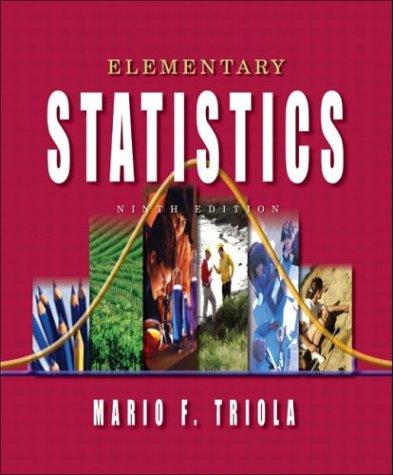Probability of Type II Error For a hypothesis test with a specified significance level a, the probability
Question:
Probability of Type II Error For a hypothesis test with a specified significance level
a, the probability of a type I error is
a, whereas the probability b of a type II error depends on the particular value of p that is used as an alternative to the null hypothesis.
Refer to Exercise 20.
Assuming that the true value of p is 0.45, find
b, the probability of a type II error. Use the following procedure. [Hint: In Step 3, use the values p 5 0.45 and pq n 5 (0.45)(0.55) 50.]
Step 1: Find the value(s) of the sample statistic that correspond to the critical value(s). In substitute the critical value(s) for z, enter the values for p (from the null hypothesis) and q, then solve for .
Step 2: Given a particular value of p that is an alternative to the value given in the null hypothesis, draw the normal curve with this new alternative value of p at the center. Also plot the value(s) of found in Step 1.
Step 3: Refer to the graph in Step 2, and find the area of the new critical region bounded by the value(s) of found in Step 1. (Be sure to use the standard 13.
Mean Weight of M&M Candies A package of M&M plain candies is labeled as containing 1361 g, and there are 1498 candies, so the mean weight of the individual candies should be 1361 1498, or 0.9085 g. The Mars Company wants to produce the M&Ms with weights that don’t cheat consumers, nor do they want to waste production money by having a mean that is significantly greater than is necessary. In a test of the claim that m 2 0.9085 g, a sample of 100 M&Ms is randomly selected. (See Data Set 19 in Appendix B.) When the 100 weights are used with Minitab, the display is as shown here (assuming that s is known to be 0.03691 g). Interpret those results. Are consumers being cheated? Is money being wasted by making the M&Ms heavier than necessary?
Step by Step Answer:






